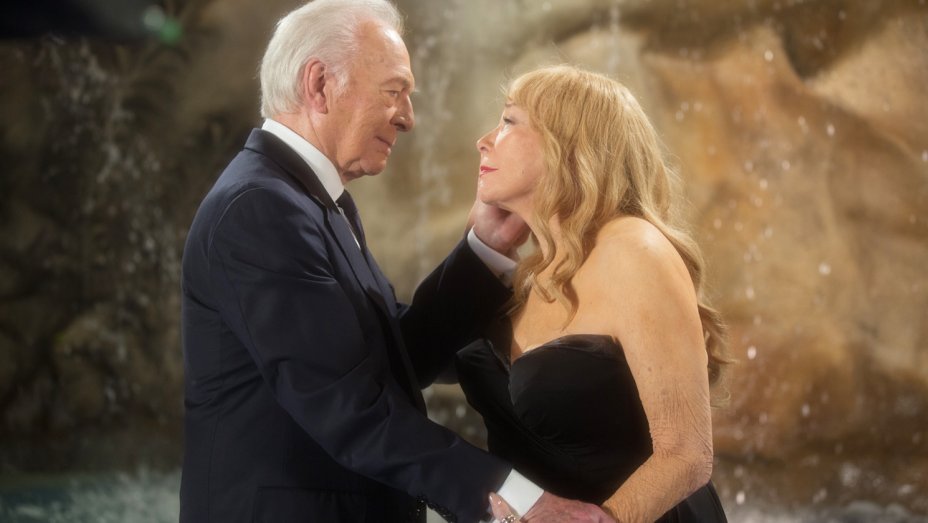Call me oblivious, but I had never even heard of “Tigerland,” a low-budget 2000 film that has a kind of “Blair Witch Hunt” rawness to it. That, of course, will be a salt-lick to some and salt rubbed into the wounds of others who can’t stand guerilla filmmaking. But if any topic seems compatible with this style, it’s a film about basic training–especially training for a Vietnam War that’s so removed from this generation of movie-goers that it may as well be World War I.
“Tigerland” sports a strong script and cast, so the decision by director Joel Schumacher (“Batman & Robin,” “Phone Booth”) to film using grainier 16mm stock looks pretty good, in retrospect . . . if, that is, you’re okay watching a slightly jittery, always grainy, and sometimes slow-focus final print. It’s also the kind of film that makes you wonder what the advantage is to watching in High Definition.
Colin Farrell stars as a draftee who clearly has a problem–with being drafted, with taking orders, with sadistic idiots who go all Darwin on the weaker trainees . . . you name it. He’s the type of iconoclast descended from characters like Paul Newman’s “Cool Hand Luke” or “Hombre,” but with a little more aggressiveness. Like Luke, he’s a complex guy who says far less than he’s thinking, and he’s thinking a lot. Like Luke, you can tell he’s a humanist at heart, someone who believes in the sacredness of humanity and is therefore at odds with the notion that some of the people he’s training with could be hurt or killed. Heck, he’s probably thinking that about the enemy as well. Bozz isn’t a type you’d recognize from the headlines of the day. He’s no draft dodger with a delay fuse that will make him run, and he’s not a weak man nor a coward. He doesn’t seem to be aligned with the hippies or anti-war movement either. He’s his own man, and that makes for an interesting take on Vietnam. And like the operators of the Underground Railroad from a different war, he’s not above helping those who feel enslaved find their way out of “Tigerland,” which is a swamp in Louisiana that’s used to give trainees one final week of “real ‘Nam” experience before they go in country.
Though Bozz, his writer friend Jim (Matthew Davis, whose character plays Nick to Farrell’s Gatsby), and the others in their unit never make it to Vietnam, the powerful point of the film seems to be that the training they endure at “Tigerland”–where leaders are determined to replicate the experiences they’ll face in “Nam,” including the use of live ammunition–have somehow sunk into a mire that’s less recognizable to Bozz as being part of the human experience.
There’s not much of a plot, really. Guys try to get through training while Bozz acts as a big brother to some, and people like Wilson (Shea Whigham) are gung-ho types who will do whatever they can to piss on other people’s parades. In the end, “Tigerland feels like a slice-of-crappy-life drama that’s heavy on realism and perhaps just a little light on plot twists. Still, it’s a film that holds your interest and makes you think, instead of just watching passively. That has to count for something.
“Tigerland,” rated R for violence and language, also stars Clifton Collins, Jr., Tom Guiry, Russell Richardson, and Nick Searcy.
Video:
As I said, this film was deliberately shot in guerilla style with a film stock that invites graininess. The filmmakers also manipulated the colors to desaturate much of the scenes, and that too makes it tough to evaluate. Again, it’s deliberate, so they shouldn’t be faulted for the decision, but grain registers as noise when it’s converted to a digital format and I’m betting the people who worked on the AVC/MPEG-4 transfer are half bald now, from pulling out their hair. They had to have used a bunch of DNR just to get a watchable picture, but there are a number of moments when you get ghosting and see a halo effect, especially in semi-dark scenes. “Tigerland” is presented in 1.85:1 aspect ratio.
Audio:
The featured audio is an English DTS-HD MA 5.1, and it’s got enough firepower in the battle scenes to move the sound off the corners and into the center of the room. But for much of this dialogue-driven film, where rain is one of the biggest ambient effects, the sound isn’t nearly so dynamic. Additional audio options are Spanish Dolby Digital 5.1 and French DTS 5.1, with subtitles in English SDH, Spanish, and French.
Extras:
The longest feature is a full-length vintage commentary track by Schumacher, who talks about how different an experience this was for him and touches on the usual bases: how people were cast, how he framed or conceptualized certain scenes, how he insisted on a 29-day shoot to push his actors and crew so they’d feel the same urgency as the characters, how certain actors responded, and so on. Schumacher turns up again in a 10-minute interview in which he talks about the film with the benefit of hindsight, and really doesn’t change his mind. Screenwriter Ross Klavan’s 10-minute interview is interesting because he talks about how his own training experience at Tigerland fed into the script, and as if to reinforce that, we get the longest feature: “The Real Tigerland” (22 min.), in which Vietnam vets recall their own experiences at Tigerland. A theme park it ain’t. Rounding out the bonus features is an audition tape (6 min.) of Farrell trying to get the part, and the theatrical trailer and TV spots.
Bottom Line:
I wouldn’t put “Tigerland” in the top ranks of war movies, but it’s a solid second-tier entry that makes you think about the characters and what they’re going through. And Farrell does a nice job of playing the iconoclastic hero.


